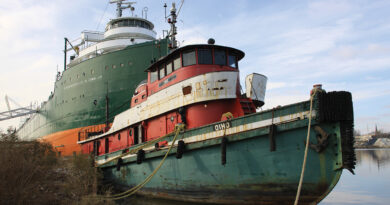Cape Henry Lighthouse in Virginia Beach Virginia
Cape Henry Lighthouse, perched on the southern edge of the entrance to the Chesapeake Bay in Virginia Beach, Virginia, is one of the most historically significant landmarks in the United States. With a storied past that stretches back over two centuries, this iconic lighthouse has guided countless ships to safety, witnessed the birth of a nation, and stood as a symbol of maritime heritage. Today, the Cape Henry Lighthouse is a beloved attraction, drawing visitors from all over the world to explore its rich history, climb its storied steps, and take in the breathtaking views of the Chesapeake Bay and Atlantic Ocean.
A Response to a Dangerous Coastline
In the early days of American history, the waters off the coast of Virginia were notorious for their treacherous conditions. The entrance to the Chesapeake Bay, where the Atlantic Ocean meets the bay, was a particularly hazardous area for ships. Strong currents, shifting sandbars, and unpredictable weather patterns made navigation perilous, and many vessels were lost along this stretch of coastline.
Recognizing the need for a navigational aid to guide ships safely into the Chesapeake Bay, the newly formed United States government took action. In 1789, the first United States Congress passed the Lighthouse Act, which authorized the federal government to establish lighthouses, beacons, buoys, and public piers. Cape Henry was selected as the site for the first federally funded lighthouse in the United States.
Construction and Design
The construction of the Cape Henry Lighthouse began in 1791 under the supervision of John McComb Jr., a prominent architect who would later go on to design New York City’s City Hall. The lighthouse was constructed using Aquia Creek sandstone, a material known for its durability, which was quarried in Virginia. The design was simple yet effective, featuring an octagonal shape with a height of approximately 90 feet.
The lighthouse was completed in 1792, and its first lighting took place on October 15 of that year. The original light source was a series of oil lamps and reflectors, which produced a visible light that could be seen by ships approaching the coastline. The lighthouse was manned by a keeper, who was responsible for maintaining the light, cleaning the lenses, and ensuring that the beacon operated correctly.
A Symbol of Early American Ingenuity
The Cape Henry Lighthouse was more than just a navigational aid; it was a symbol of the United States’ commitment to safeguarding its shores and fostering commerce. As the first public works project funded by the federal government, the lighthouse represented the nation’s efforts to build infrastructure that would support its growing economy and protect its citizens.
Throughout the early 19th century, the Cape Henry Lighthouse played a crucial role in guiding ships carrying goods and passengers into the Chesapeake Bay, one of the most important waterways in the young nation. Its beacon provided a sense of security to sailors navigating the challenging waters, and its presence helped to establish the region as a vital hub of trade and commerce.
The Construction of the New Cape Henry Lighthouse
By the mid-19th century, the original Cape Henry Lighthouse was showing signs of wear and tear. Cracks began to appear in the structure’s masonry, raising concerns about its stability and the safety of those who relied on its light. Additionally, advancements in lighthouse technology and the increasing size of ships entering the Chesapeake Bay necessitated the construction of a more powerful and modern lighthouse.
In response to these concerns, Congress authorized the construction of a new lighthouse at Cape Henry in 1870. The new lighthouse was designed to be taller, stronger, and more technologically advanced than its predecessor, incorporating the latest innovations in lighthouse construction.
Building the New Lighthouse
Construction of the new Cape Henry Lighthouse began in 1871, just a short distance from the original lighthouse. The new structure was built using cast iron and brick, materials that were more durable and better suited to withstand the harsh coastal environment. The lighthouse was designed in a more traditional cylindrical shape, with a height of 157 feet, making it significantly taller than the original lighthouse.
The new lighthouse was equipped with a Fresnel lens, a revolutionary optical system that allowed the light to be projected over greater distances. This powerful beacon, which could be seen up to 20 miles away, greatly improved the safety of ships navigating the entrance to the Chesapeake Bay.
The new Cape Henry Lighthouse was completed in 1881 and officially lit on December 15 of that year. The original lighthouse was decommissioned and eventually transferred to the Association for the Preservation of Virginia Antiquities (now Preservation Virginia), which has maintained the structure as a historic landmark.
The Cape Henry Lighthouses Today
Today, both the original and the new Cape Henry Lighthouses are popular tourist attractions in Virginia Beach, drawing visitors interested in maritime history, architecture, and scenic views. The lighthouses are located within the boundaries of Fort Story, an active military base, but they are accessible to the public.
Visitors can tour the original Cape Henry Lighthouse, which is open for self-guided tours. The climb to the top of the lighthouse’s 191 steps is well worth the effort, offering panoramic views of the Chesapeake Bay, the Atlantic Ocean, and the surrounding landscape. Interpretive signs and exhibits provide information about the history of the lighthouse and its role in American maritime history.
The new Cape Henry Lighthouse, while still an active aid to navigation, is not open to the public. However, visitors can view the lighthouse from the outside and appreciate its towering presence as it continues to guide ships safely into the Chesapeake Bay.
Preservation and Legacy
The original Cape Henry Lighthouse is a designated National Historic Landmark, recognized for its significance as the first federally funded lighthouse in the United States and its role in the early development of the nation’s maritime infrastructure. Preservation Virginia, the organization responsible for maintaining the lighthouse, has undertaken several restoration projects over the years to ensure that the structure remains in good condition for future generations.
The Cape Henry Lighthouses stand as enduring symbols of the nation’s commitment to maritime safety and the importance of preserving our historical landmarks. They serve as reminders of the challenges faced by early American settlers and the ingenuity that allowed them to overcome those challenges.
Events and Educational Programs
The Cape Henry Lighthouses host a variety of events and educational programs throughout the year, aimed at promoting the history and significance of these historic structures. Special events include anniversary celebrations, historical reenactments, and guided tours led by knowledgeable interpreters. Educational programs, often geared towards school groups, offer hands-on learning experiences that explore topics such as maritime navigation, lighthouse technology, and early American history.
Conclusion
The Cape Henry Lighthouses are more than just beacons of light; they are beacons of history, guiding visitors through the rich maritime heritage of Virginia Beach and the United States. From their role in the early days of American independence to their continued presence as symbols of coastal safety, the Cape Henry Lighthouses stand as testaments to the enduring legacy of the nation’s commitment to safeguarding its shores. Whether you’re a history enthusiast, a lover of architecture, or simply someone looking for a stunning view, a visit to the Cape Henry Lighthouses is an experience that offers a deep connection to the past and an appreciation for the enduring power of these historic landmarks.
Discover more from City Towner
Subscribe to get the latest posts sent to your email.



